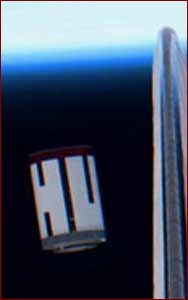NASA
Ages ago, in a previous career choice, I worked for NASA at the Goddard Space Flight Center, located in Greenbelt, Maryland.
There's a short blurb on this in my bio, but I'll go deeper into it here..
A decade ago I was part of a high school placement program designed to place potential candidates into fields that they would prove promising. For the better part of my senior year, I spend half a day doing work in Building 19, otherwise known to other areas of GSFC as the Photonics Building and Lab. There we assembled and worked on lasers, telemetry and guidance systems. I was there with four other promising individuals, each helping a researcher do their work. One of us was responsible for checking the life expectancy of cryogenically prepared laser diodes (in preparation for Cassini at the time), and the other two were working with optics and computer science as well, but I can't recall their research at the moment.
I was responsible for modelling and checking the dynamic and static analyses of a payload canister, which was called the PAMS-STU. Using NASA's NASTRAN Finite Element Analysis program I was able to accurately analyze and test the PAMS-STU against loads it would encounter during flight. The PAMS mission eventually did succeed, as you can see from this webpage. PAMS stands for Passive Aerodynamically-Stabilized Magnetically-Damped Satellite. The techies at NASA love the acronyms! PAMS went up in May of 1996 on Shuttle Endeavour's STS-77 flight. From a quick search:
The PAMS-STU was intended to test out a passive aerodynamic stabilization and magnetic damping system. It had an unbalanced mass distribution and two magnetic rods. The interaction of the rods with Earth's magnetic field was expected to damp any wobble or spin. There were some problems in ascertaining the success fully because of the malfunction of the laser ranger. It reentered the atmosphere on October 26.
Thank goodness I didn't work on the laser ranger. Here is an obligatory, fancy picture of it in space next to the shuttle!


Leave a comment